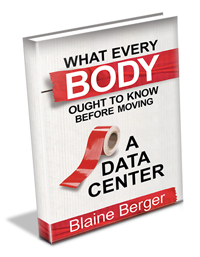Emily was unsatisfied with her firm’s progress migrating to the Cloud. Her dashboard metrics showed few applications made it to the cloud with Legacy applications remaining stubbornly on-premise.
While our conversation uncovered some of the root causes why legacy applications are difficult to migrate, it also exposed the frustration with the conventional wisdom around a cloud migration.
That conventional wisdom embodied in most vendor engagements looks like this oversimplified list:
- Assess and rank your applications for cloud readiness (every vendor has their own scoring methodology)
- Migrate the “easier” applications first
- Use the lessons learned to migrate the Legacy applications
What’s wrong with that prescription?
Perhaps nothing. Generating quick wins is the cornerstone for every vendor engagement. It’s easy to imagine that success will come. You probably have an idea of the easiest applications to migrate in your own firm without even spending your money on a vendor’s assessment.
What happens after you get that quick win?
The quick wins now set an expectation. Somehow, the remaining legacy applications will migrate at the same rate with the same success using the same resources.
Of course, those legacy applications will not migrate at the same speed, success, or with the same resources.
Were the legacy applications even inspected or merely ranked in a batting order?
Just like Emily, you already knew that legacy applications would be complicated and time-consuming to evaluate. Now, the low-hanging fruit has been gathered into the cloud and only the stubborn legacy applications remain high in the trees but still not in the cloud. Your budget exhausted, your expectations unmet, and you remain at the starting gate with the legacy dilemma.
It turns out this problem is well-discussed. Legacy applications are typically the most complex with the highest risk and the most resistance by their caretakers to move. Some pundits have suggested that wholesale legacy replacement gets you to the cloud faster. Perhaps, but at what cost?
Keep in mind there is a reputational cost to a migration badly blundered.
Migrating to the Cloud is a trade-off.
It’s not automatically better or less expensive or faster or magically transforming. Further, the lessons learned from “easy” migrations don’t approach the knowledge you need for legacy applications.
A practical cloud migration strategy exposes the specific trade-offs for the difficult legacy applications. To do that, you need to make a few decisions before boiling the ocean of possibilities to avoid wasting your resources.
- Are you going to rehost the legacy application?
- Are you going to re-engineer or refactor the application to fit a chosen destination cloud platform?
- Are you going to re-write or replace the application?
All of those involve tradeoffs. Moreover, each legacy application could have a different answer.
As I advised Emily, stop spending your professional services budget on obvious, low-hanging fruit. Make some decisions and then spend it where you need the most help – those complex, legacy application migration projects.
My new book is now available in paperback on Amazon.


Blaine Berger is the author of
What Everybody Ought To Know Before Moving A Data Center.
Let’s discuss working together.
E-mail me at blaine@e-oasis.com .